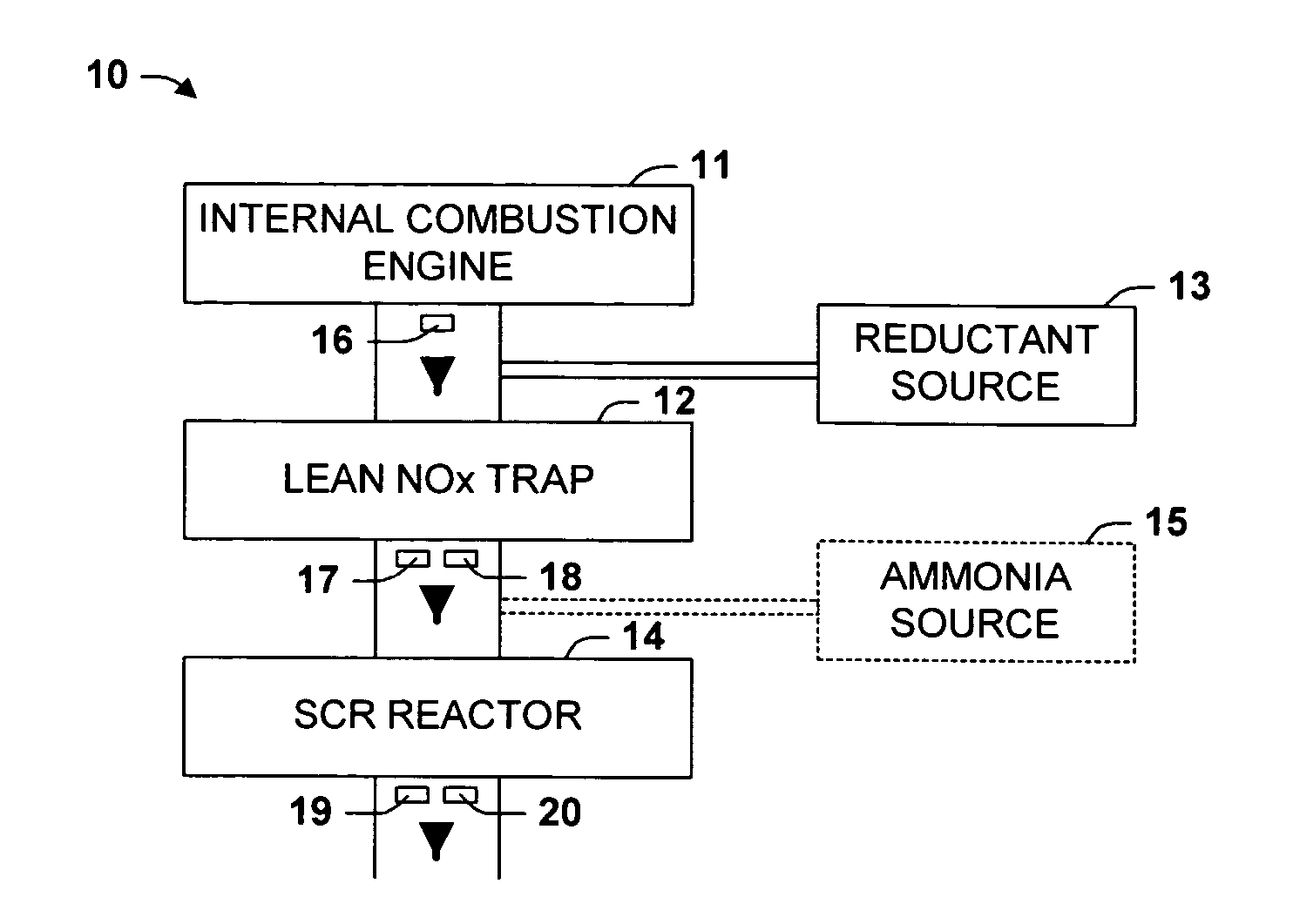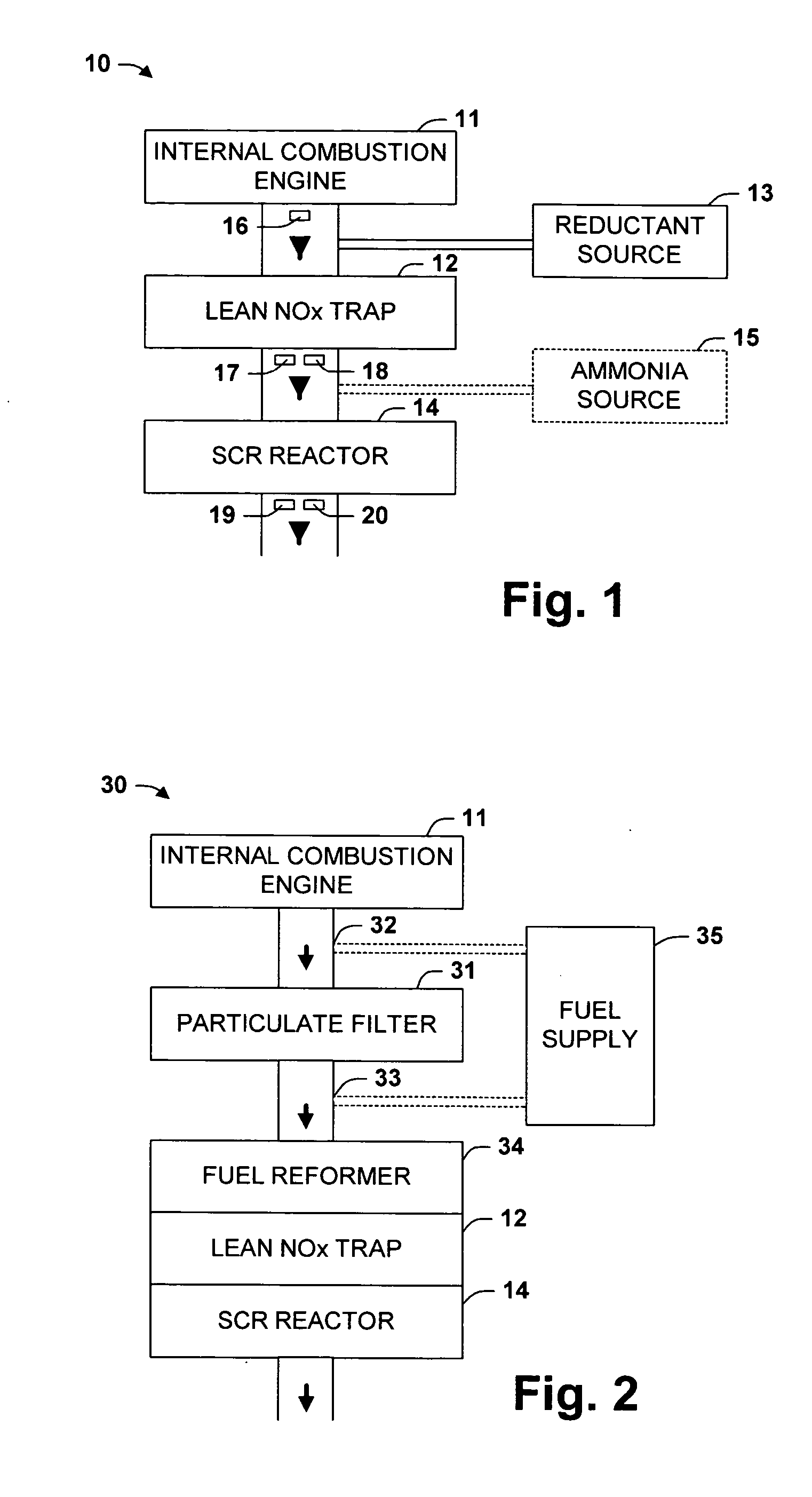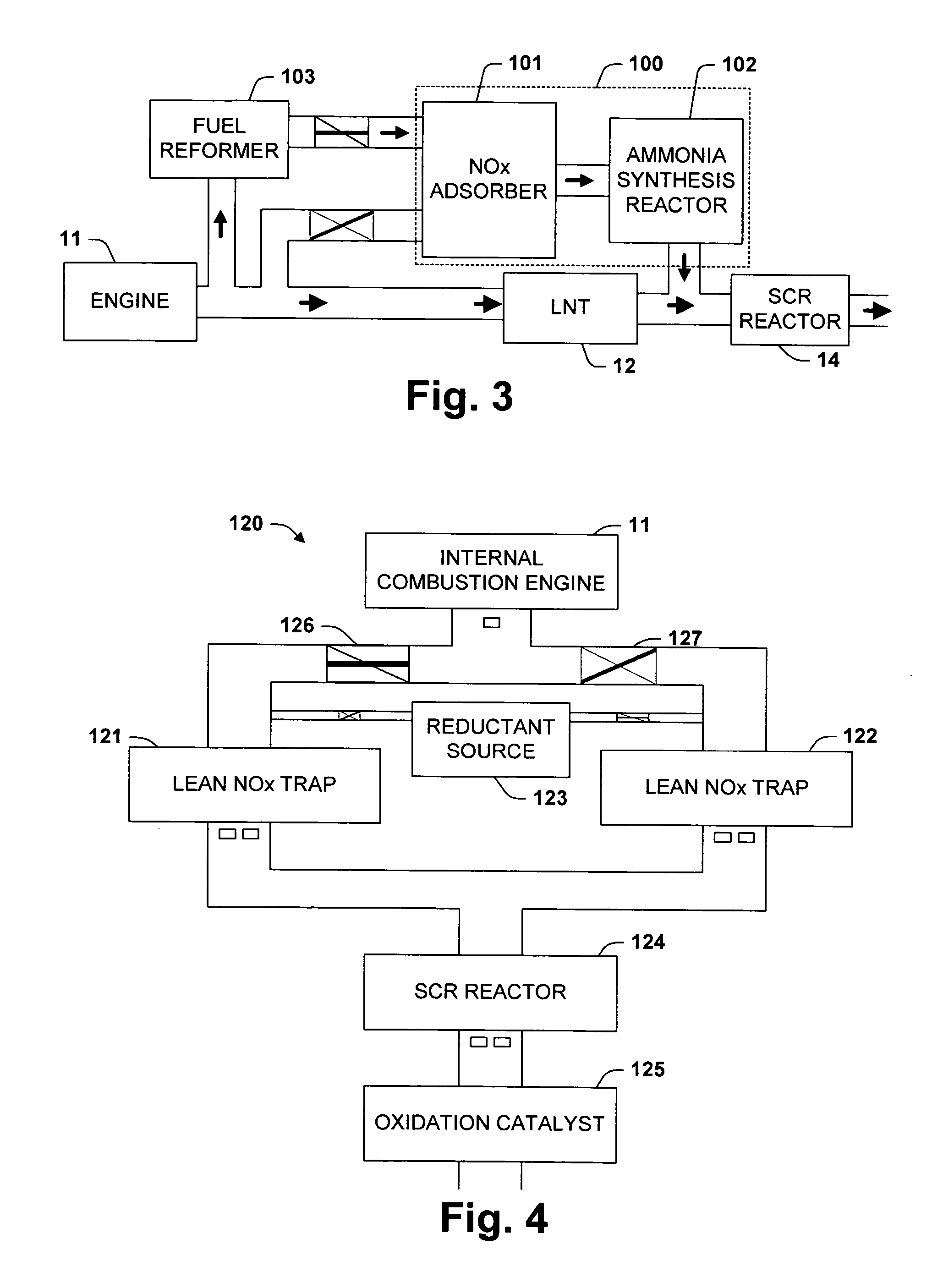Hybrid catalyst system for exhaust emissions reduction
a hybrid catalyst and exhaust technology, applied in the direction of machines/engines, mechanical equipment, separation processes, etc., can solve the problems of exhaust being too oxygen-rich for three-way catalysts to be effective, putting considerable effort toward meeting, and nox from internal combustion engines, etc., to improve the efficiency of the regeneration cycle, reduce nox during regeneration, and enhance conversion
- Summary
- Abstract
- Description
- Claims
- Application Information
AI Technical Summary
Benefits of technology
Problems solved by technology
Method used
Image
Examples
Embodiment Construction
[0023]FIG. 1 is a schematic illustration of a vehicle 10 provided to aide in the description of several aspects of the present invention. The vehicle 10 includes an internal combustion engine 11, a lean NOx trap (LNT) 12, a selective catalytic reduction (SCR) reactor 14, a reductant source 13, an optional ammonia source 15, and sensors 16-20. The vehicle 10 typically produces lean exhaust. The LNT 12 adsorbs NOx from the lean exhaust. From time to time, the exhaust is made rich by injecting a reductant from the reductant source 13. Rich exhaust causes NOx to desorb from the LNT 12. Some of the NOx escapes the LNT, some is reduced to N2, and some is reduced to NH3.
[0024] NOx escaping from the LNT during regeneration and NOx not adsorbed by the LNT during lean operation passes through to the SCR reactor 14. In the SCR reactor 14, some of this NOx is reduced by reaction with NH3. The NH3 can be NH3 produced in the LNT 12 and / or NH3 supplied from the optional ammonia source 15. The SCR...
PUM
| Property | Measurement | Unit |
|---|---|---|
| partial pressure | aaaaa | aaaaa |
| temperatures | aaaaa | aaaaa |
| temperatures | aaaaa | aaaaa |
Abstract
Description
Claims
Application Information
 Login to View More
Login to View More - R&D
- Intellectual Property
- Life Sciences
- Materials
- Tech Scout
- Unparalleled Data Quality
- Higher Quality Content
- 60% Fewer Hallucinations
Browse by: Latest US Patents, China's latest patents, Technical Efficacy Thesaurus, Application Domain, Technology Topic, Popular Technical Reports.
© 2025 PatSnap. All rights reserved.Legal|Privacy policy|Modern Slavery Act Transparency Statement|Sitemap|About US| Contact US: help@patsnap.com



